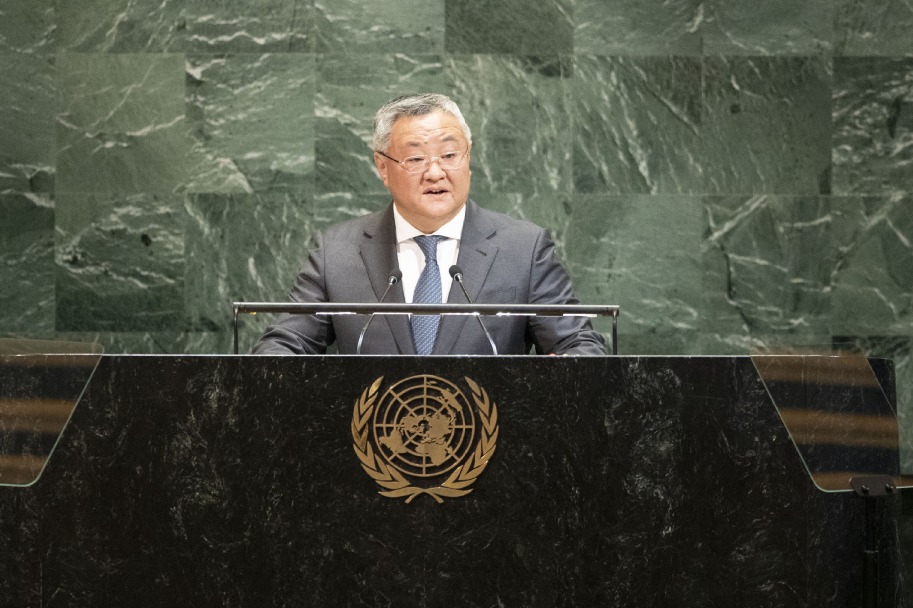Caution travels far in SE Asia


Joint strategy for tourism reopening complicated by uneven pace of virus, experts say
Southeast Asian countries may find it challenging to work together to revive their tourism industries as the varying impact of a wave of coronavirus infections complicates a regional strategy, experts say.
"As the regional states are at different stages of the Omicron wave, coupled with the fact that the situations are still in flux, some regional states may be more cautious than others when it comes to reopening and recovery," said Kaewkamol Pitakdumrongkit, assistant professor and head of the Centre for Multilateralism Studies at the S. Rajaratnam School of International Studies at Singapore's Nanyang Technological University.
The uneven march of the COVID-19 variant across the region may affect the pace with which an individual government can bring in regional initiatives to reopen the tourism sector, Kaewkamol told China Daily. This poses a challenge to the implementation of regional frameworks such as the Post-COVID-19 Recovery Plan for ASEAN tourism endorsed in September.
Having remained largely closed to international travelers for most of 2020 and 2021, most members of the Association of Southeast Asian Nations are cautiously moving to reopen their borders.
Thailand, after reopening to tourists from 46 countries in November, further eased its quarantine-free entry program from Tuesday. It requires foreign visitors to spend only one night in a government-approved hotel while waiting for their COVID-19 test result.
Malaysian Health Minister Khairy Jamaluddin said on Feb 24 that a plan to reopen the country has been finalized and will be announced soon by Prime Minister Ismail Sabri Yaakob. The country has already implemented a Vaccinated Travel Lane with neighboring Singapore, which also aims to reopen to vaccinated tourists from all countries after the Omicron wave subsides.
Vietnam said it plans to fully reopen to international visits from March 15, despite a COVID-19 surge fueled by Omicron that saw a new daily record of nearly 95,000 cases on Feb 28.
With a more cautious approach, Laos in early February said it will cut the quarantine period for new arrivals from 14 days to seven for certain groups. The Health Ministry said it hopes to vaccinate 80 percent of the population by the end of 2022 before the country can reopen more broadly to revitalize the economy.
In response to governments' reopening plans, regional airlines such as AirAsia are ramping up efforts to spur intra-ASEAN travel with new routes. Tony Fernandes, chief executive of Capital A, formerly AirAsia Group, said the company is working on new destinations in Thailand, Indonesia and Malaysia, according to the Bangkok Post.
Though the market experienced some setbacks in the past few months due to Omicron, Brendan Sobie, a Singapore-based analyst with Sobie Aviation, said many countries have started to reopen or are accelerating their reopening plans, which provides opportunities for airlines to resume their international routes.
Sobie told China Daily that Omicron has further exposed the fact that ASEAN countries are not all on the same page, as there has been a lack of consensus in terms of reopening protocols, despite the frameworks and initiatives agreed by these countries.
"All governments have their own priorities, so it is very difficult for anything to work on a multilateral basis in ASEAN," Sobie said.
ASEAN tourism ministers agreed in January to announce the reopening of the sector, adding that "every possible coordination and cooperation will be provided" for a gradual reopening.
In February, the bloc's foreign ministers also said in their first meeting this year that they look forward to jointly facilitating essential business and official travel through the ASEAN Travel Corridor Arrangement Framework, while ensuring public health safety.
Sobie said the region can still accelerate the pace of reopening with efforts by individual countries or through bilateral initiatives.
Kaewkamol said she expects ASEAN to also benefit from the wider global reopening because international tourism accounts for about 12 percent of the region's GDP-more than the global average of about 10 percent.































